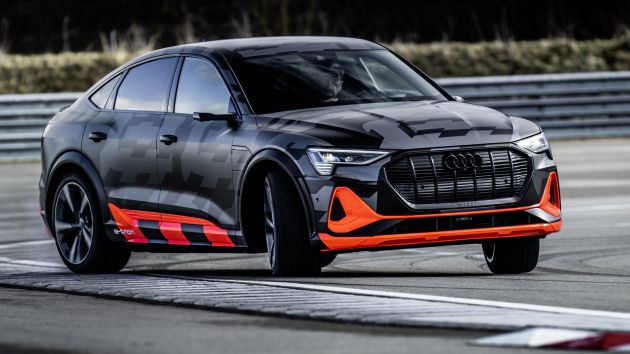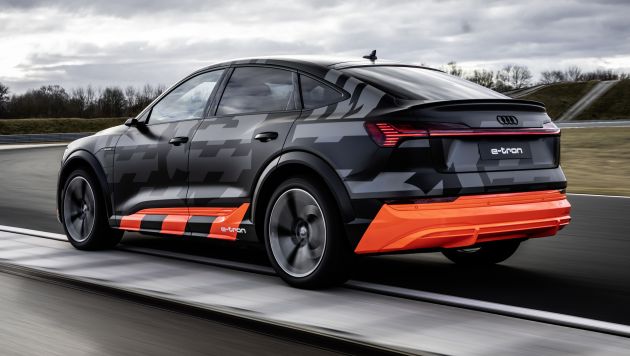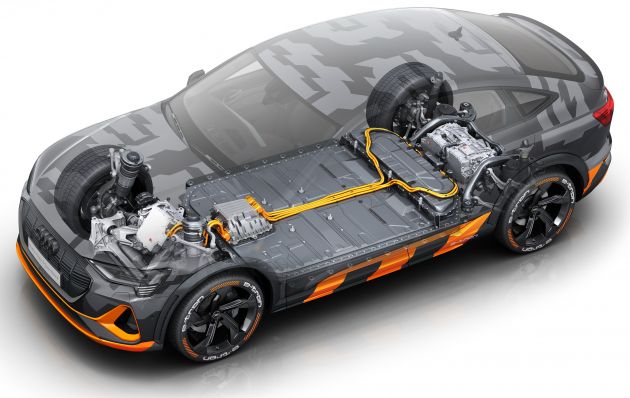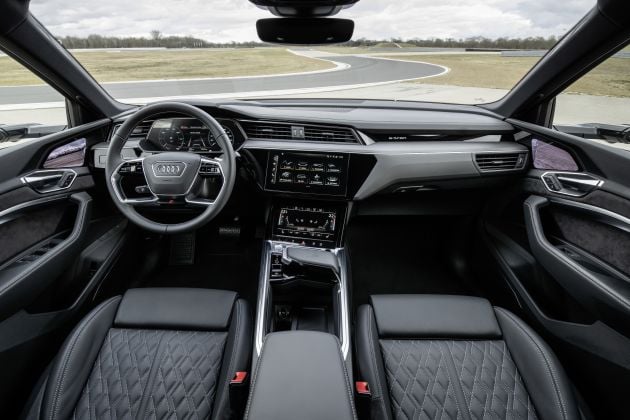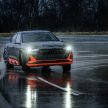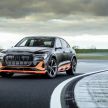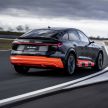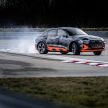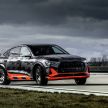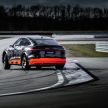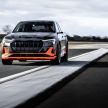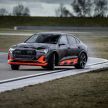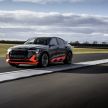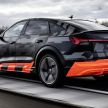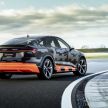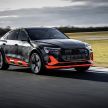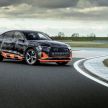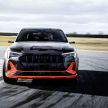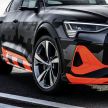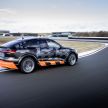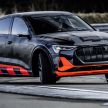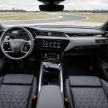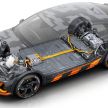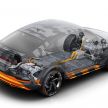The all-electric Audi e-tron SUV may be the pinnacle of Ingolstadt’s electrification efforts, but the company isn’t hanging around for long. Say hello to the e-tron S and e-tron S Sportback, the brand’s first S-branded EVs, which promise to bring along a smorgasbord of new technologies – as Audi revealed during the international media’s first drive of the prototypes.
Whereas the standard e-tron is available with twin electric motors producing 360 PS and 561 Nm of torque, the S adds a second motor on the rear axle, making it the first three-motor EV in production. This provides real torque vectoring across the two rear wheels, a greater rearward bias and more dynamic handling.
Some changes were made to the configuration of the motors, with the larger unit at the rear of the regular 55 model now being placed at the front of the car, albeit in a modified form and producing 124 kW (169 PS) instead of the usual 140 kW (190 PS). The 55’s smaller front motor has been switched to the rear of the car, and there are now two of them, producing a combined 196 kW (266 PS).
All in all, Audi claims that the e-tron S churns out 320 kW (435 PS) and 808 Nm of torque, while an overboost function in S mode brings that up to 370 kW (503 PS) and a whopping 973 Nm for eight seconds, thanks to an uprated cooling system. So equipped, it is capable of getting from zero to 100 km/h in 4.5 seconds before hitting its electronically limited top speed of 210 km/h.
All motors get their own power electronics supplying their own three-phase power, and are each connected to the wheels via a single-speed planetary gear set. They are juiced by the same 397 V lithium-ion battery with a 95 kWh gross capacity (net figure 86.5 kWh) as the standard car. No range figure has been released, but Audi says the battery is capable of pushing out up to 430 kW temporarily, supporting the car’s performance.
The car runs mostly in rear-wheel drive only, with the front motor only being engaged when more power is required, or when grip levels are low. The real magic sauce, however, is the fully variable torque distribution at the rear, capable of shuffling torque from one wheel to the other within milliseconds. This means it can generate a yaw moment to support the steering, and reduce the steering angle to make a turn, Audi says.
The e-tron S comes as standard with air suspension with adaptive damping, which can adjust the ride height by 76 mm, dropping the car by up to 26 mm at high speeds. Its settings, like those of the powertrain, can be manipulated through the Audi drive select system with comfort, auto, dynamic, efficiency, individual, allroad and offroad modes. The car can also recuperate up to 270 kW of kinetic energy when braking from 100 km/h.
Elsewhere, the e-tron S features five-link axles at the front and rear with larger anti-roll bars and optimised harmonisation of the elastokinematics and dampers. The brake discs measure up to 400 mm in front that are clamped by six-piston callipers (optionally available in orange), and buyers can also specify Audi’s progressive steering system that increases the steering ratio the more the driver turns the wheel.
Just like other S models, the e-tron S and e-tron S Sportback look fairly similar to their standard iterations, sharing the large triangular front air intakes and rear diffuser of the S Line variants. However, these cars benefit from wheel arches that are 23 mm wider than stock; despite this, their optimised aerodynamics mean that the Sportback model still has a low drag coefficient of 0.26, while the regular body style’s is 0.28.
The interior is also mostly unchanged, with Audi continuing to offer either sports seats or the optional super sport seats with increased bolstering. The S badges on the steering wheel and door sills, as well as the S embossings on the seats and gearlever, are the only hints of the car’s sporting potential.
Charging is performed using a portable charger that can be used with either a single-phase 230-volt socket or a triple-phase 400-volt outlet, as well as a charging system connect wallbox. The car can also accept up to 11 kW of AC charging, or 150 kW of DC charging through the European Ionity fast charging network – the latter can bring the battery’s charge from 5% to 80% in just half an hour.
- Dynamic photo
- Audi e-tron S
- Dynamic photo
- Dynamic photo
- Dynamic photo
- Dynamic photo
- Dynamic photo
- Dynamic photo
- Dynamic photo
- Dynamic photo
- Dynamic photo
- Static photo
- Dynamic photo
- Static photo
- Static photo
- Dynamic photo
- Detail
- Dynamic photo
- Static photo
- Dynamic photo
- Electric drivetrain
Looking to sell your car? Sell it with Carro.

